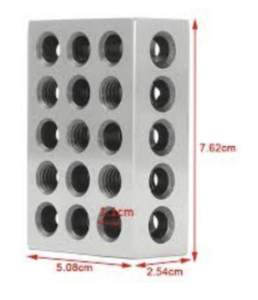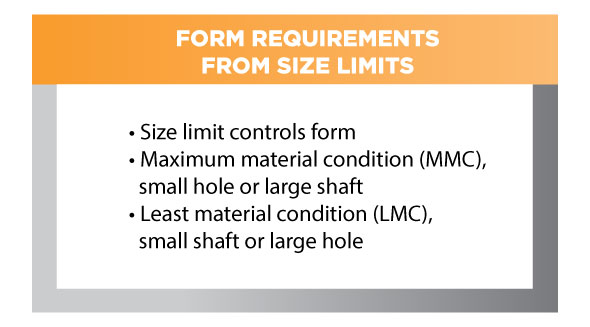 Today I want to talk about a common definition for something we all talk about when the subject of GD&T comes up. I think it’s safe to say that the vast majority of people reading this series earn their livings on the floors of American factories. We design, machine, assemble, weld, measure, probe, form, punch, plate, paint and praise or curse the unimaginable number of “things” we all get our hands on during the day to day workings of our lives. We work in the various industries of our nation and world sometimes working to digest the big picture and sometimes focused on the minute details of the inner workings of things we can only see with the help of other machines.
Today I want to talk about a common definition for something we all talk about when the subject of GD&T comes up. I think it’s safe to say that the vast majority of people reading this series earn their livings on the floors of American factories. We design, machine, assemble, weld, measure, probe, form, punch, plate, paint and praise or curse the unimaginable number of “things” we all get our hands on during the day to day workings of our lives. We work in the various industries of our nation and world sometimes working to digest the big picture and sometimes focused on the minute details of the inner workings of things we can only see with the help of other machines.
What Constitutes a “Part” in GD&T
But before any concert of efforts can accomplish a Boeing 787 jumbo jet all our attentions must focus on a part. A part is the simplest form of usable geometry, upon which, we can focus. In this case the word usable can be argued with but for these purposes the term is apt. When I checked with Google on dictionary definitions for the word part, the only one of over 25 different definitions I found was for a component, that being something that can be attached or separated from a system. That’s pretty close to what we can use for a GD&T definition of a part. A part is an item, or two or more items, joined together, not normally subject to disassembly without the destruction or impairment of its designed use. Another wording for a part is the combination of two or more features that when separated defeat the purpose of its assembly. I like both. I have tried to think of a part that has only one “feature” or “item” but I have never come up with anything, which is not to say a one feature part does not exist, as I adhere to the saying that you cannot prove a negative. There are philosophers who are tricky at wording that say otherwise but I accept the fact that our universe is infinite and the term infinity points to a number large enough to contain any possibility. So I will accept that there may be things outside my imagination.
What Constitutes a “Feature” in GD&T
So, in GD&T, we have parts and we have features. Now we get to a level where much of our GD&T is practiced, on the feature level. A feature is a physical portion of a part. That includes holes, slots, bosses, sides, tops , bottoms, corners, chamfers and the list goes on. There are things that many of us might not recognize as features on our parts. The bottom of a hole can be a feature. The line where two planes of a part converge can be a feature; even if you don’t accept that a geometric line can be a feature, (although many people do,) because most modern drawings include statements about allowable inside and outside radii and chamfers. The corner of a part, where two planes converge, when it is radiused or chamfered, becomes a recognizable and definable feature. A datum, when applied to a part, becomes a datum feature, and with that in mind our GD&T system allows the definition of datums to include even a point of geometry. Now we have definitions that include and cover the lowest common denominators of our manufacturing world, parts and features.





 Or in words the engineer is stating to “ hold position within a cylinder shaped tolerance zone to .03 inches at maximum material condition relative to datum A.”
Or in words the engineer is stating to “ hold position within a cylinder shaped tolerance zone to .03 inches at maximum material condition relative to datum A.”






